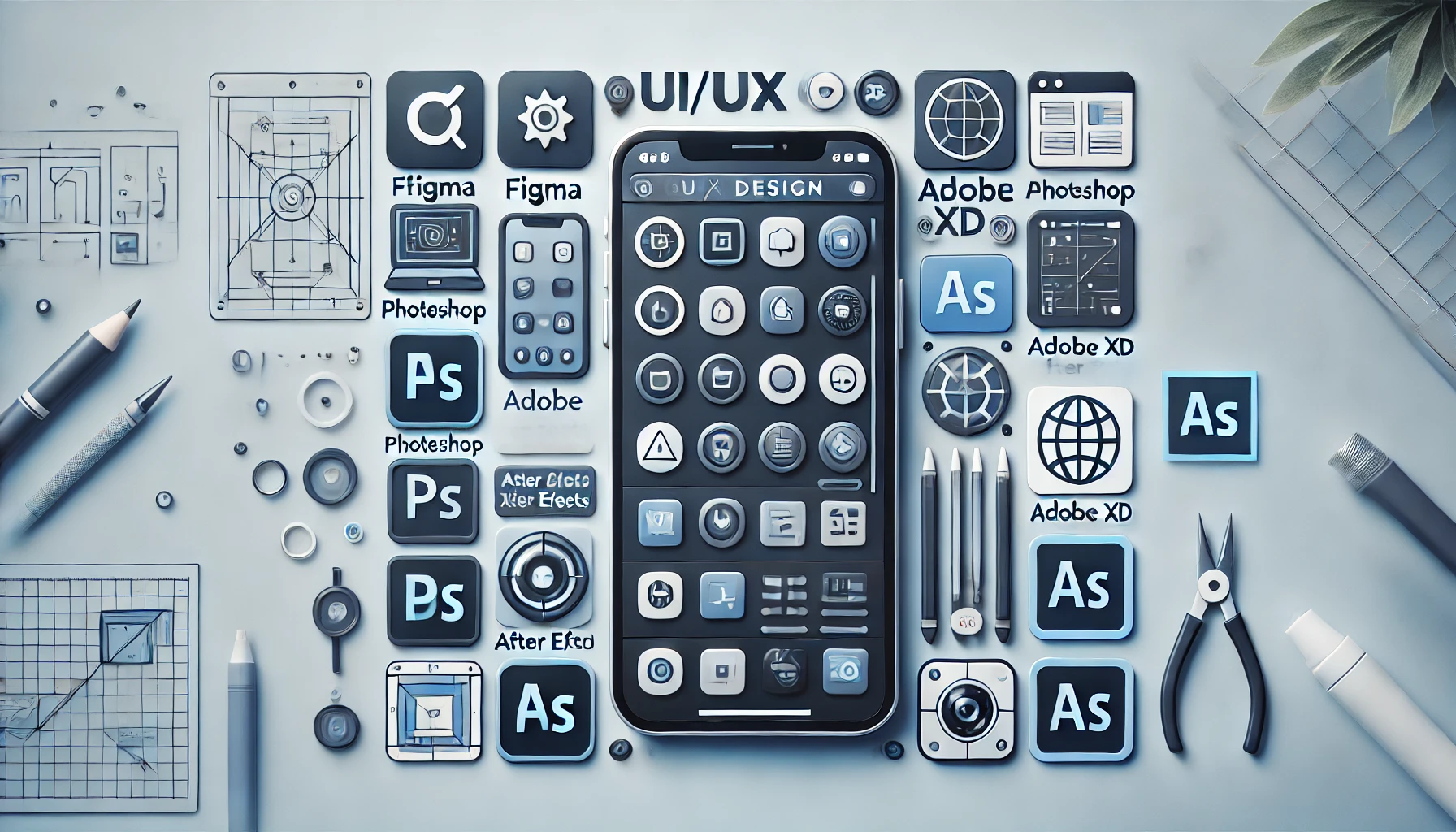Introduction
In the world of mobile apps, a great idea alone is not enough to ensure success. User Interface (UI) and User Experience (UX) design are two critical components that determine whether your app will engage users and keep them coming back. With thousands of apps available in app stores, it’s more important than ever to focus on creating a seamless, intuitive, and enjoyable experience for your users. In this blog, we’ll explore the importance of UI/UX design for mobile apps and highlight key design best practices that lead to higher engagement and a better overall user experience.
What is UI/UX Design?
Before diving into best practices, it’s essential to understand what UI and UX design are and how they differ.
- UI Design refers to the visual elements of an app—things like buttons, color schemes, typography, and icons. It’s all about creating a visually appealing interface that makes it easy for users to interact with the app.
- UX Design focuses on the overall user experience—the journey a user takes when interacting with the app, from onboarding to completing tasks. It involves usability, functionality, and creating a seamless, enjoyable flow that keeps users engaged.
Both UI and UX are critical for app success, and they work hand-in-hand to create a cohesive product.
Why UI/UX Design is Crucial for Mobile App Success
1. First Impressions Matter
In the highly competitive mobile app market, first impressions are everything. Studies show that users form an opinion about an app within the first few seconds of interaction. A well-designed UI immediately grabs attention, while a poor design leads to frustration and quick abandonment.
Example: A shopping app with an intuitive, visually appealing layout will instantly engage users, making it easy for them to browse products and make purchases. On the other hand, a cluttered or confusing design will lead to users uninstalling the app without hesitation.
Benefits:
- Higher Engagement: An attractive, well-designed interface encourages users to explore the app further.
- Better Retention: Users are more likely to stick with an app that offers a smooth, enjoyable experience from the start.
2. Seamless User Experience Drives Engagement
A great user experience is about more than just looks—it’s about how easy and enjoyable the app is to use. UX design focuses on creating a seamless flow that helps users accomplish their goals with minimal friction. Whether it’s booking a ride, ordering food, or sending a message, users want to complete tasks quickly and efficiently.
Example: A ride-hailing app with clear navigation, easy-to-read options, and smooth transitions between screens allows users to book a ride in seconds. This positive experience keeps them coming back to the app again and again.
Benefits:
- Increased User Satisfaction: A seamless experience reduces frustration and keeps users happy.
- Improved Retention Rates: Users are more likely to return to an app that’s easy to navigate and accomplishes their goals efficiently.
3. Good Design Boosts Conversions
Well-thought-out UI/UX design not only enhances the user experience but also boosts conversion rates. Whether your goal is to increase sign-ups, in-app purchases, or subscriptions, a smooth and intuitive design can guide users toward completing these actions effortlessly.
Example: An e-commerce app with a clear and streamlined checkout process, including easy payment options and minimal steps, can significantly improve conversion rates by reducing cart abandonment.
Benefits:
- Higher Conversion Rates: Intuitive design encourages users to take action, whether it’s making a purchase or signing up for a service.
- Better Business Results: Increased conversions directly contribute to the success and growth of your app.
Best Practices for UI/UX Design in Mobile Apps
To create a successful mobile app, following UI/UX design best practices is essential. Here are some of the key principles that lead to a great user experience:
1. Prioritize Simplicity
Less is more when it comes to mobile apps. A simple, uncluttered interface ensures that users can navigate the app without confusion. Too many elements, buttons, or options can overwhelm users and lead to frustration.
Best Practice: Keep the layout clean, with plenty of white space and clear call-to-action buttons. Focus on the app’s primary functions and eliminate any unnecessary elements.
2. Optimize for Touch Interactions
Mobile devices rely on touch-based interactions, so it’s essential to design with this in mind. Buttons, icons, and interactive elements should be large enough to tap easily without errors.
Best Practice: Ensure that all tappable elements are at least 44×44 pixels in size, and place them in easily reachable areas of the screen, especially for thumb use.
3. Ensure Consistency
Consistency is key to creating a cohesive user experience. Users expect buttons, icons, and navigation elements to behave the same way throughout the app. This reduces the learning curve and makes the app more intuitive.
Best Practice: Use consistent design patterns for buttons, menus, and forms across the app. Ensure that colors, fonts, and visual elements are unified for a more seamless experience.
4. Focus on Speed and Performance
No matter how well-designed your app is, poor performance will drive users away. Mobile users expect apps to load quickly and respond immediately to their actions. Slow load times or lag can lead to frustration and abandonment.
Best Practice: Optimize your app for performance by reducing load times, optimizing images, and using efficient code. Ensure that users can interact with the app smoothly, even on slower networks or older devices.
5. Test, Test, and Test Again
One of the most important aspects of UI/UX design is continuous testing. Regularly test your app with real users to identify pain points, usability issues, and areas for improvement. This will help you refine the user experience and ensure that your app meets user expectations.
Best Practice: Conduct A/B testing, usability tests, and gather feedback from real users during development. Make adjustments based on data-driven insights to improve the app’s design and functionality.
6. Leverage the Right Tools for Design Excellence
To create outstanding UI/UX designs, it’s crucial to use the right tools that allow for seamless collaboration, detailed design work, and interactive prototypes. Tools like Figma, Photoshop, Adobe XD, After Effects, and Lottie are industry standards for designing and refining mobile apps.
- Figma: A collaborative design tool that enables teams to work on the same file in real-time, making it easier to create and iterate on design elements.
- Photoshop: Ideal for detailed graphic design work, allowing designers to create high-quality visuals for app interfaces.
- Lottie: A tool for integrating lightweight, scalable animations into apps, improving visual appeal without compromising performance.
- Adobe XD: A vector-based tool for designing and prototyping user experiences, offering features like wireframing, interaction design, and sharing prototypes with stakeholders.
- After Effects: Used for creating high-quality animations and motion graphics, adding a dynamic feel to the app’s design.
By leveraging these tools, designers can create interactive prototypes, enhance visuals, and incorporate animations, all of which contribute to a more engaging and seamless user experience.
Conclusion: Great UI/UX Design is the Key to App Success
The importance of UI/UX design in mobile app development cannot be overstated. A well-designed app not only attracts users but also keeps them engaged and ensures they accomplish their tasks easily. By following best practices like prioritizing simplicity, ensuring consistency, and optimizing for touch interactions, businesses can create apps that users love to interact with.
At Mobitrics Technologies, we specialize in crafting intuitive and visually appealing UI/UX designs that elevate the user experience. Whether you’re building a new app or redesigning an existing one, our team can help you create an app that stands out.
Looking to enhance the UI/UX of your mobile app? Contact us today to learn how we can create a seamless, engaging user experience that drives results.



